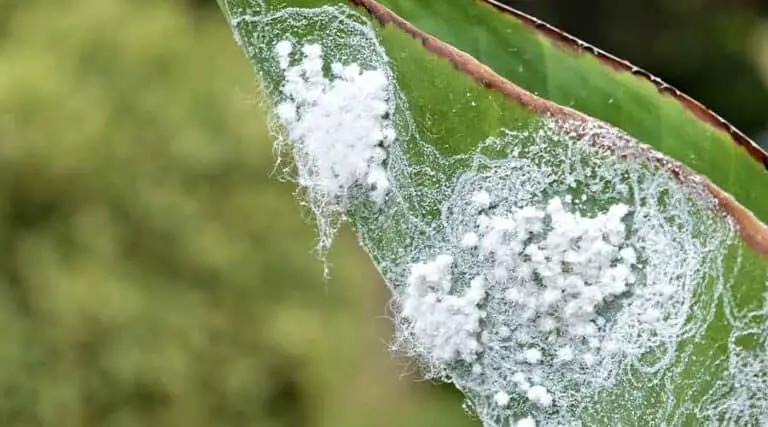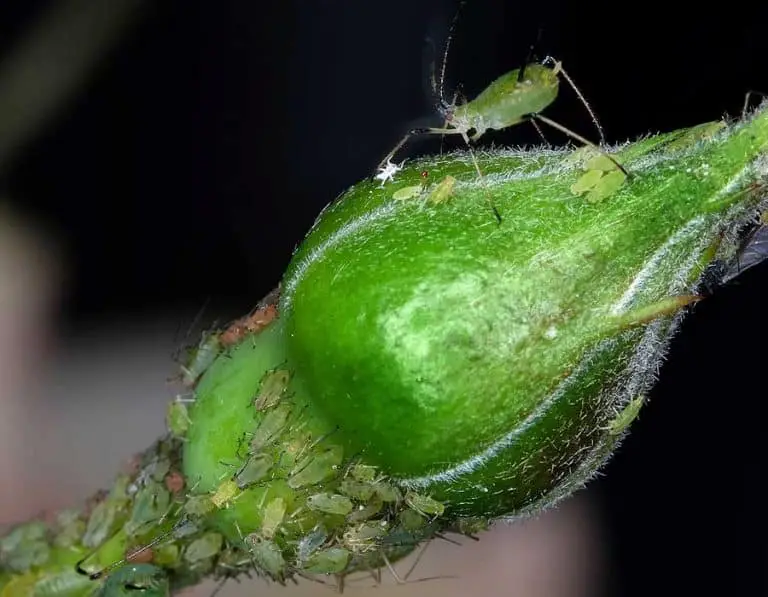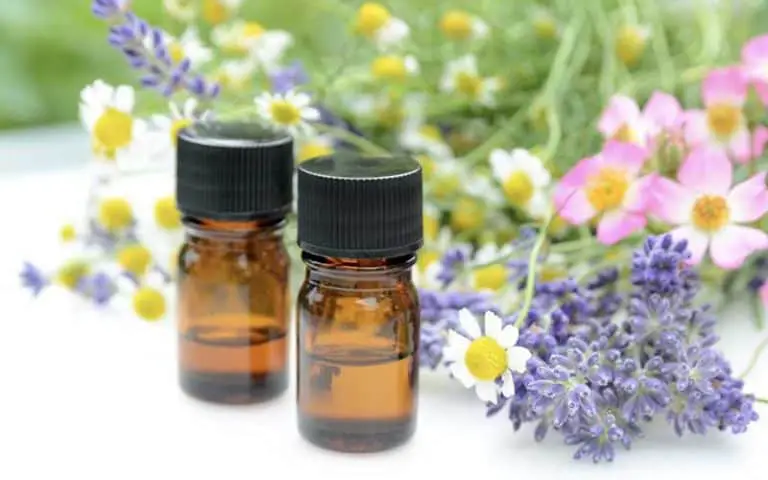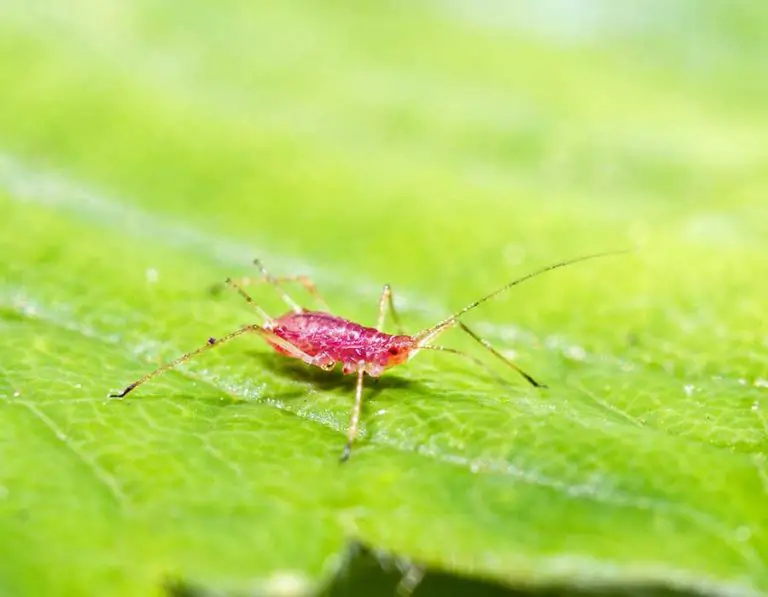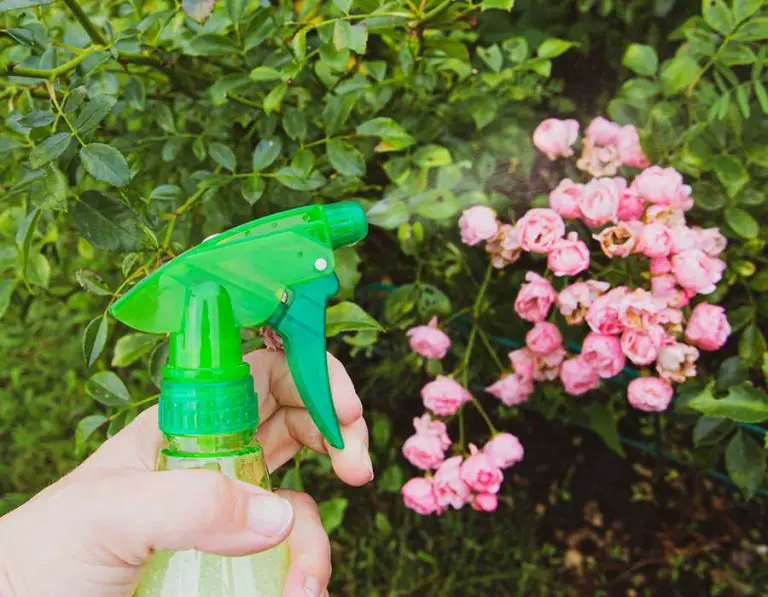How to Kill Aphids on Petunias (Step by Step Guide)
Excited about growing your petunias? We understand the sentiment. Unfortunately, however, so do aphids. Aphids are pests that frequently occur on petunias and, if left untreated, could fatally damage your plant.
You’ve come to the right place if you’ve discovered aphids on your petunias or are looking to avoid an infestation. Here is a step-by-step guide on how to kill aphids on petunias.
Why Do Petunias Attract Aphids?
Yes, petunias are beautiful, but it is not their beauty that attracts aphids. Aphids are garden pests that attach themselves to the sticky foliage of petunias and feed on the plant sap.
In addition to their love for sap, there are three reasons why your Petunias may be getting Aphids.
- You over-fertilize your plant. Using lots of fertilizer encourages growth. Since these are nutritious soft tissues, they attract aphids.
- Your plants may be over-watered. Overwatering your plant will cause it to grow new, healthy, and green foliage enticing these pests.
- You keep your plant in the shade. There is a reason Aphids reside under the leaves. It’s to keep away from sunlight. If your plant isn’t receiving adequate sunlight, it may be more prone to infestation.
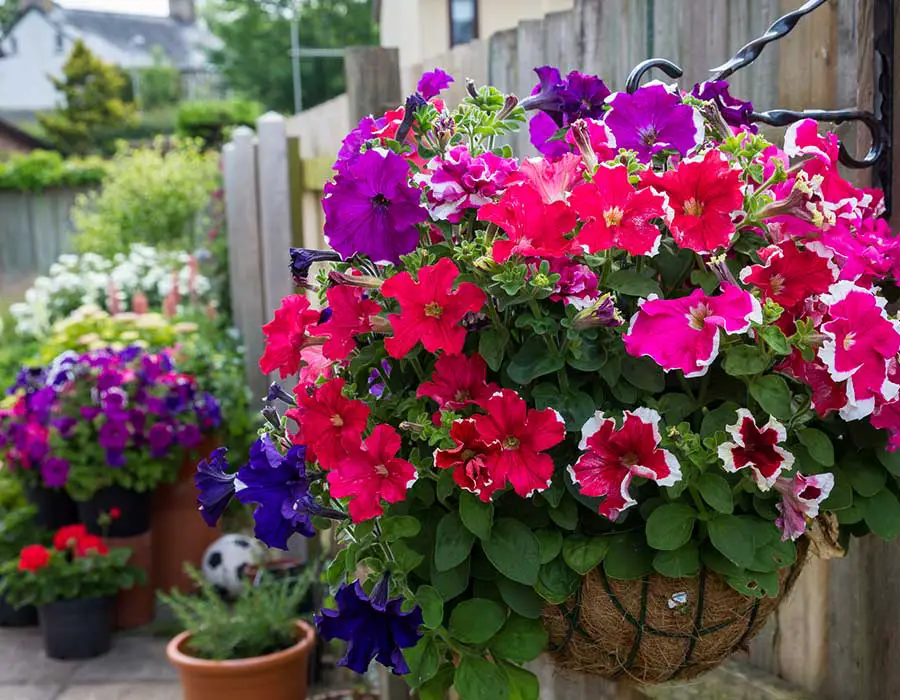
Step 1: Watch Out for the Symptoms
Aphids can seriously harm your plant by inhibiting its growth and transmitting plant viruses which may eventually kill it. Therefore, you must check on your petunias and make sure everything looks as it should.
Aphids are tiny insects, and you may even miss them if you’re not looking. However, spotting insects isn’t the only way to detect the pest. If you observe any of the following symptoms, you may have an aphid infestation on your hands.
Yellow Leaves
When aphids suck on stem sap, it prevents the efficient transport of nutrients and water to the leaves. This, in turn, causes the leaves to turn yellow.
In addition, because aphids reproduce rapidly, they quickly cover the leaves’ surface, reducing the amount of light absorbed by the plant. As a result, photosynthesis is hindered, causing yellowing of the leaves.
Sooty Mold
Aphids penetrate the plant with their suckling mouthparts and feed on the liquids and sugars. Once they have digested what they need, they excrete the excess juices as a sticky, sugar-rich substance called honeydew.
The honeydew coats the plants and attracts fungal spores, encouraging black mold fungus growth.
Stunted Growth
Since the sucking of sap inhibits nutrient uptake, it can cause leaf curling and yellowing. In addition, sooty mold lower the photosynthetic ability of your plant.
These factors contribute to the lack of water, food, and energy, causing your petunias to grow slowly.
Leaf Curling
It’s water that causes plants to keep their rigidity. When aphids feed on the leaves and stems, they hinder the amount of water reaching the leaves, causing them to curl.
Although leaf curling on its own is a problem, it may cause more. Curling reduces the surface area of plants, lowering their rate of photosynthesis and driving stunted growth.
Gall Formation
Galls are abnormal growths caused by aphids. When these pests feed on your petunia’s sap, they release secretions that stimulate the production of plant growth hormones. This results in increased cell growth leading to the production of galls.
Because galls are plant parts, they require nutrients to grow. This means galls steal essential nutrients from the plant affecting its growth.
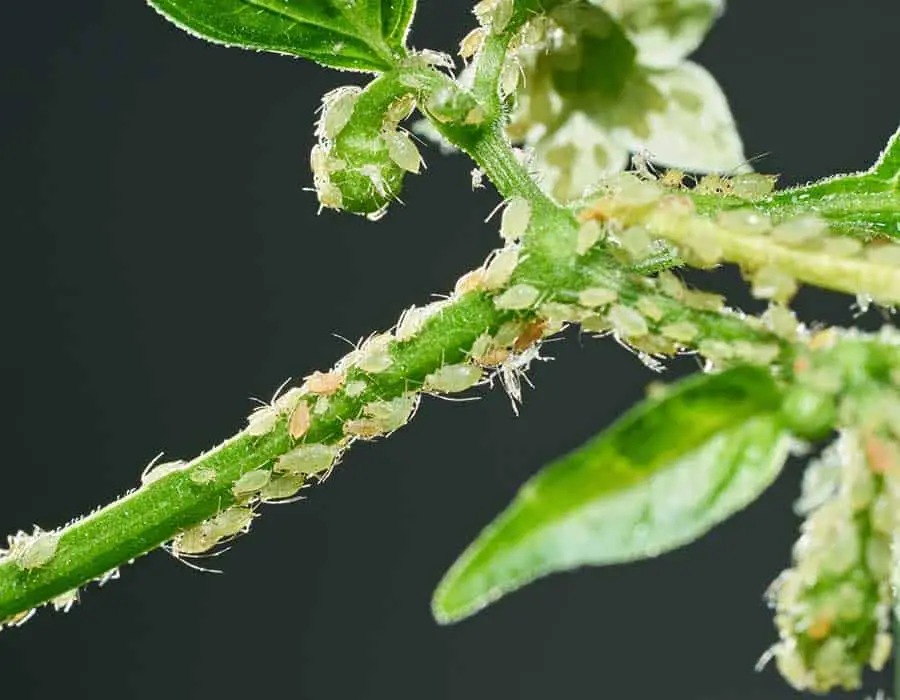
Step 2: Learn About Aphids
Even though several symptoms can help you identify an aphid infestation, you may spot them when enough damage has already been done. Therefore, you must keep a lookout for the insect itself to get rid of it before it causes your petunia any severe harm.
This section will go over what aphids are and what they look like to help you identify them.
We’ve already talked about how tiny aphids are. But how small exactly? They are 2-4 mm and come in various colors, including white, black, light green, brown, gray, and yellow. Some have wings, while some don’t. They are pear-shaped and soft-bodied.
A defining feature of aphids are the tube-like structures called cornicles present at their hind end. In addition, aphids occur in clusters. They multiply rapidly, forming colonies. However, you may occasionally see them in small numbers.
Step 3: Eliminate the Aphids
If you’ve spotted aphids on your petunias or any of the symptoms mentioned above, it is time to take action. Luckily, there are numerous methods you can use to kill aphids and keep your plant pest-free.
Water Spray
If you’re looking for a fast and straightforward solution, then a high-pressure water spray is the way to go. Direct your blast of water on the aphid colony for best results. The robust stream of water kills aphids in one of two ways.
- The high pressure kills some immediately.
- Some aphids fall off, but because they move slowly, they won’t be able to reattach themselves to the plant on time, eventually dying of starvation.
Insecticidal Soap
If you want to move a step up from the water spray, consider using insecticidal soap against your aphids. This solution is made of soap salts that smother the aphids, eventually killing them.
You can either buy a ready-made formula or make one at home. Most people prefer the former since all the ingredients are in the right proportions minimizing plant damage.
However, if you’re more comfortable using your mixture, use the following recipe to make insecticidal soap at home.
- Mix 2-½ tablespoons of liquid dish soap and 2-½ tablespoons of vegetable oil (coconut oil will work, too) in one gallon of distilled water.
- Transfer as needed in a spray bottle
- Spray on the infested areas. Repeat every 14 days till you see results
Remember to coat your petunias well so that the mixture doesn’t leave behind any survivors.
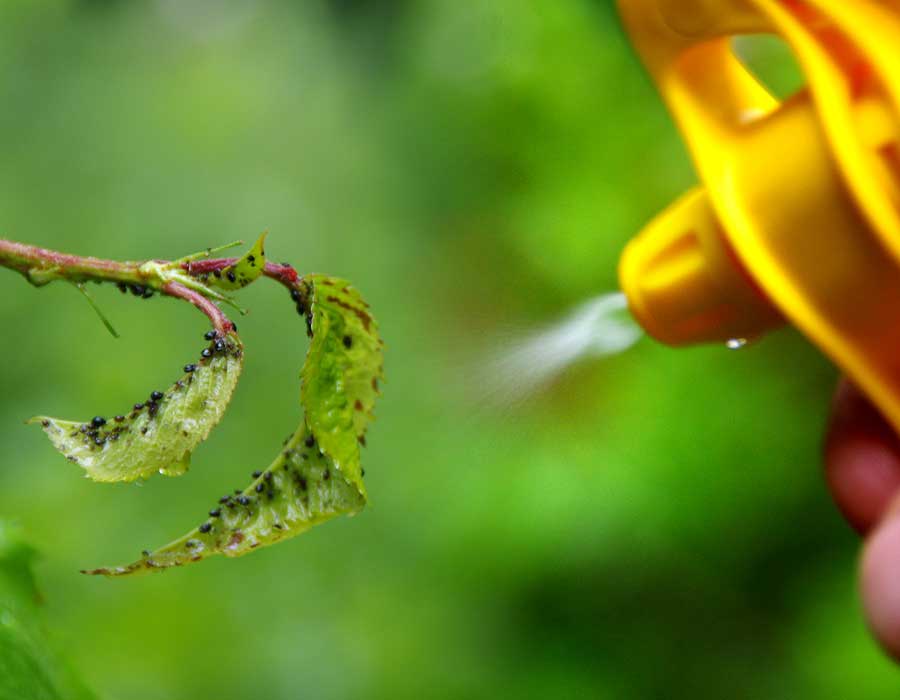
Oil
Oils work the same way as soaps, smothering the aphids and killing them. You can either use petroleum-based oils or plant-derived ones, whichever you’re more comfortable spraying on your petunias.
You’re not supposed to use the oil directly, though. Instead, make an oil solution by mixing 1-2% oil solution in water and spraying it directly on the infested areas. Repeat application every two weeks till you see results.
However, use oils and soaps with caution as they can also act on other non-target insects.
Pruning
Pruning is one way you can initially get rid of any significant colonies. Cut off the leaves and stems where you notice the pest and dispose of them.
However, it won’t completely eradicate the pest, so you’ll have to use this method in combination with another one.
Diatomaceous Earth
DE slashes the insect’s exoskeleton causing moisture to escape its body. This dehydrates the aphid and kills it.
You can use this method by sprinkling the powder around the plant in the surrounding soil. In addition, brush the powder on the infested foliage. DE is only effective if the plant comes in contact with it; therefore, make sure you apply the powder as close to the colonies as possible.
DE does take some time to work, but you’ll know the method is successful once you notice a decrease in aphid activity. This technique requires reapplication, so don’t forget to do that frequently.
Egg Shells
Eggshells work the same way as DE. It cuts the exoskeleton and dehydrates the aphid making it a great alternative to DE. However, crushing and using eggshells may prove to be a cumbersome process, so only go for it if it completely suits you.
Systemic Insecticides
This method is to be used only when nothing else is working, and you have a severe aphid infestation.
Systemic insecticides such as imidacloprid are used as soil drenches.
The petunias then take up this insecticide, and the aphid ingests it when sucking on the sap. The poison then kills the pest.
This method will also keep any aphids from returning as imidacloprid stays in the soil and plant for quite some time.
However, this method also targets pollinators, including bees, and should be avoided unless necessary. If you do go for this method, use it at a time when the flowers are not blooming to limit contact of the poison with beneficial pollinators.
Step 4: Prevent Infestation
Killing the aphids does not mean your petunias are safe from them. In fact, the infestation can occur again. Therefore you must take preventative measures to keep your plant pest-free.
Use Beneficial Predators
You can introduce predators in your garden that feed on aphids. This is a great way if you’re looking for a natural method to reduce the aphid population on your petunias.
Ladybugs, aphid lions, aphid midge, parasitic wasps, and hoverflies prey on aphids. You can also use birds like goldfinch to keep your plant pest-free.
Control the Ants
Using beneficial predators alone won’t keep aphids away. You also have to look out for ants that protect and encourage the growth of aphids.
Ants and aphids are in a symbiotic relationship where they mutually benefit. Ants provide the aphids with protection from predators, whereas aphids provide food (ants feed on the honeydew).
Removing the ants will make the aphids more vulnerable to predators aiding in their prevention and control.
Repel Aphids with Plants
There are several aphid-repelling plants you can purchase to keep this pest away. Examples include marigold, lavender, and catnip. Plant these near your petunias to drive the aphids away.
Other Preventative Tips
Other ways you can use to keep aphids at bay are:
- Avoid over-fertilization.
- Don’t over-water your plants.
- Plant your petunias where they’ll get a lot of sunlight.
Final Thoughts
Don’t worry about finding aphids on your petunias. It’s simply an act of nature, and luckily, you can use numerous methods to kill the pest.
Do your research before using any methods, so you don’t cause any unwanted damage to your plant. And remember, it’s always a good idea to ask an expert.

